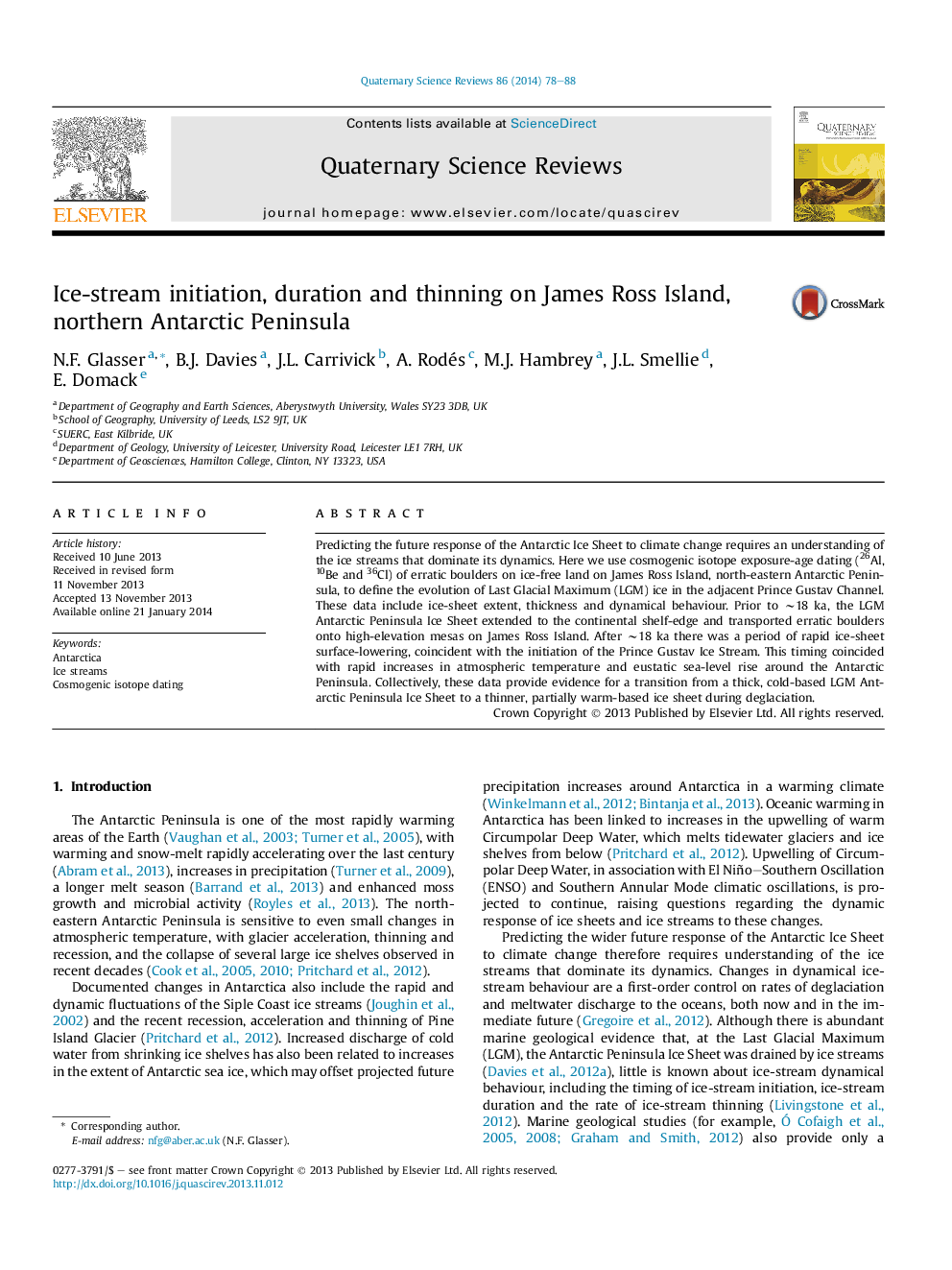| Article ID | Journal | Published Year | Pages | File Type |
|---|---|---|---|---|
| 6445717 | Quaternary Science Reviews | 2014 | 11 Pages |
Abstract
Predicting the future response of the Antarctic Ice Sheet to climate change requires an understanding of the ice streams that dominate its dynamics. Here we use cosmogenic isotope exposure-age dating (26Al, 10Be and 36Cl) of erratic boulders on ice-free land on James Ross Island, north-eastern Antarctic Peninsula, to define the evolution of Last Glacial Maximum (LGM) ice in the adjacent Prince Gustav Channel. These data include ice-sheet extent, thickness and dynamical behaviour. Prior to â¼18Â ka, the LGM Antarctic Peninsula Ice Sheet extended to the continental shelf-edge and transported erratic boulders onto high-elevation mesas on James Ross Island. After â¼18Â ka there was a period of rapid ice-sheet surface-lowering, coincident with the initiation of the Prince Gustav Ice Stream. This timing coincided with rapid increases in atmospheric temperature and eustatic sea-level rise around the Antarctic Peninsula. Collectively, these data provide evidence for a transition from a thick, cold-based LGM Antarctic Peninsula Ice Sheet to a thinner, partially warm-based ice sheet during deglaciation.
Keywords
Related Topics
Physical Sciences and Engineering
Earth and Planetary Sciences
Geology
Authors
N.F. Glasser, B.J. Davies, J.L. Carrivick, A. Rodés, M.J. Hambrey, J.L. Smellie, E. Domack,
